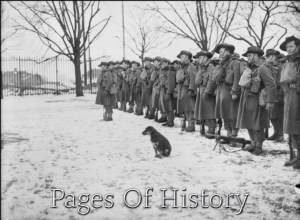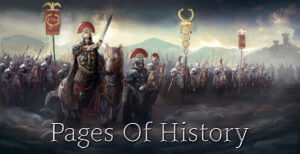Curious Chronicles: Unearthing the Most Peculiar Episodes of History
Curious Chronicles: From the dawn of civilization to the modern era, history is full of intriguing and bizarre events that have shaped our world in unexpected ways. In this article, we'll explore seven strange facts that are sure to pique your curiosity and make you question the very fabric of our past. Each of these peculiar episodes serves as a fascinating testament to the complexity and eccentricity of human history.
The Dancing Plague of 1518
In the summer of 1518, a curious phenomenon gripped the city of Strasbourg (present-day France): a dancing plague. It all began with a woman named Frau Troffea, who started dancing in the streets. Soon, more people joined her, and within a month, the dancing mania spread to over 400 people.
Historians have struggled to pinpoint the exact cause of this strange event. Some theories suggest it was a case of mass hysteria, while others propose that it was a result of ergot poisoning, which can cause hallucinations and convulsions. Another theory posits that the citizens of Strasbourg were performing a dance ritual in an attempt to ward off an impending disaster.
Regardless of the cause, the dancing plague had severe consequences for those affected. Many dancers collapsed from exhaustion or died from heart attacks and strokes. Authorities eventually intervened, hiring musicians and constructing stages to encourage the afflicted to dance the mania out of their systems.
To this day, the dancing plague of 1518 remains one of the most perplexing episodes in history, serving as a testament to the strange and unexplained phenomena that have shaped our past.
The Great Emu War of 1932
In 1932, the Australian government declared an unconventional war against an unlikely foe: the emu. As the emu population exploded in Western Australia, the large, flightless birds began wreaking havoc on crops, causing significant damage to local farmers' livelihoods.
Desperate for a solution, the Australian government enlisted the help of the military, deploying soldiers armed with machine guns to combat the emu menace. The operation, which came to be known as the "Great Emu War," quickly proved to be more challenging than anticipated.
Despite their firepower, the soldiers found it difficult to hit the fast-moving emus. Additionally, the resilient birds seemed to withstand multiple bullets before going down. After several weeks and the expenditure of over 10,000 rounds of ammunition, the military conceded defeat.
The Great Emu War serves as a bizarre yet cautionary tale about the unintended consequences of human intervention in nature and the surprising resilience of the natural world.
The Explosive Demise of the Oregon Whale
In 1970, a 45-foot-long sperm whale washed ashore in Florence, Oregon, leaving local authorities with a massive and smelly problem. With no clear plan for disposing of the carcass, officials decided to use dynamite to blast the whale into smaller, more manageable pieces.
Unfortunately, the plan backfired spectacularly. The explosion sent chunks of whale flesh flying in all directions, with some pieces landing as far as a quarter-mile away. Bystanders and nearby cars were pelted with blubber, and the resulting mess proved even more difficult to clean up than the initial problem.
The Oregon whale explosion has since become a cautionary tale about the potential pitfalls of unconventional problem-solving. It remains a bizarre and memorable episode in the annals of American history.
The War of the Stray Dog
In 1925, a seemingly insignificant event led to a brief but intense conflict between Greece and Bulgaria. The incident began when a stray dog crossed the border between the two countries, inadvertently sparking a series of events that would escalate into a full-blown military confrontation.
The dog's owner, a Greek soldier, pursued his pet across the border into Bulgarian territory. In the process, he encountered Bulgarian guards, who, mistaking his intentions, opened fire, killing the Greek soldier. Tensions between the two nations had already been high, and this seemingly trivial incident proved to be the tipping point.
Both Greece and Bulgaria quickly mobilized their armies, with Greece launching an invasion into Bulgarian territory. The conflict, which came to be known as the "War of the Stray Dog," lasted for ten days, resulting in the deaths of dozens of soldiers and the displacement of thousands of civilians.
Under pressure from the League of Nations, the two countries agreed to a ceasefire and eventually resolved their differences through diplomatic negotiations. The War of the Stray Dog serves as a stark reminder of how seemingly insignificant events can trigger large-scale conflicts and the importance of diplomacy in resolving disputes.
The London Beer Flood of 1814
On October 17, 1814, a catastrophe struck the St. Giles district of London. A vat containing over 135,000 gallons of beer at the Meux and Company Brewery ruptured, causing a domino effect that led to the collapse of several other vats. In total, more than 323,000 gallons of beer flooded the surrounding streets, creating a beer tsunami that swept through the neighborhood.
The deluge of beer caused the destruction of two homes and a pub and resulted in the deaths of at least eight people. Many others were injured or left homeless by the disaster. The incident, which came to be known as the "London Beer Flood," sparked a debate about the safety regulations governing large-scale industrial operations.
In the aftermath of the tragedy, the brewery was taken to court but ultimately exonerated, as the event was deemed an "Act of God." The London Beer Flood remains one of history's most peculiar disasters, highlighting the potential dangers of industry and the unforeseen consequences of human ingenuity.
The Great Molasses Flood of 1919
On January 15, 1919, a bizarre and tragic event occurred in Boston, Massachusetts, when a massive storage tank containing over 2.3 million gallons of molasses burst, releasing a tidal wave of the sticky substance into the surrounding neighborhood.

The molasses wave, which reached speeds of up to 35 miles per hour, demolished buildings, overturned vehicles, and trapped people and animals in its path. The disaster claimed the lives of 21 people and injured 150 others. The clean-up effort took weeks, with the sticky residue remaining a constant reminder of the tragedy.
The Great Molasses Flood was later attributed to poor construction and a lack of safety inspections for the storage tank. The disaster led to a significant overhaul of building regulations and safety standards in the United States, marking a turning point in the country's approach to industrial safety.
The Disappearance of the Ninth Roman Legion
The Ninth Roman Legion, one of the most feared and formidable military forces of the ancient world, mysteriously vanished from historical records in the early 2nd century AD. Consisting of approximately 5,000 soldiers, the legion was last known to be stationed in Britain, but its ultimate fate remains shrouded in mystery.
Numerous theories have been proposed to explain the disappearance of the Ninth Legion, ranging from their annihilation in the battle against local tribes to their redeployment to other parts of the Roman Empire. Despite extensive archaeological and historical research, definitive evidence of the legion's fate has yet to be uncovered.
The enigma of the Ninth Roman Legion has captivated historians and enthusiasts for centuries, inspiring countless books, articles, and even movies. The story serves as a reminder of the many unanswered questions that still linger in the shadows of our past, tantalizing and intriguing us with the mysteries that history holds.
Conclusion:
From dancing plagues and bizarre wars to catastrophic floods and mysterious disappearances, history is full of peculiar episodes that defy explanation and capture our imagination. These curious chronicles serve as a testament to the complexity of human existence and the countless surprises that our past has to offer. As we continue to unearth these strange facts, we gain a deeper understanding of the world around us and the incredible tapestry of events that have shaped our history.
References & Pictures:
- Waller, J. (2008). A Time to Dance, A Time to Die: The Extraordinary Story of the Dancing Plague of 1518. Thriplow, UK: Icon Books.
- Lockyer, C., & Murray, J. (2000). The Oxford Guide to United States Supreme Court Decisions. Oxford, UK: Oxford University Press.
- Kean, S. (2017). Caesar's Last Breath: Decoding the Secrets of the Air Around Us. New York, NY: Little, Brown, and Company.
- Goldsworthy, A. (2003). The Complete Roman Army. London, UK: Thames & Hudson.
- Wikipedia








